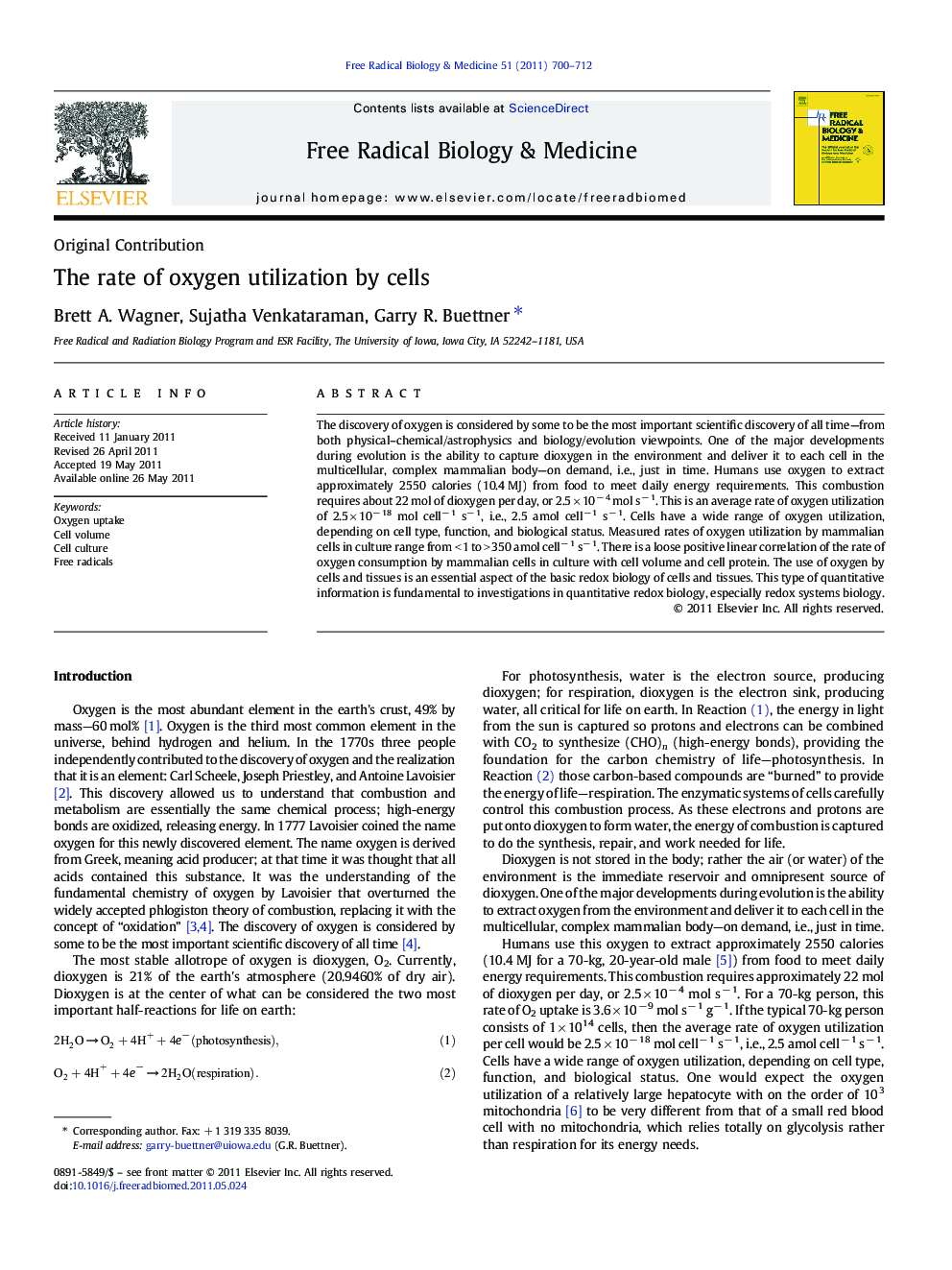| Article ID | Journal | Published Year | Pages | File Type |
|---|---|---|---|---|
| 10738022 | Free Radical Biology and Medicine | 2011 | 13 Pages |
Abstract
The discovery of oxygen is considered by some to be the most important scientific discovery of all time-from both physical-chemical/astrophysics and biology/evolution viewpoints. One of the major developments during evolution is the ability to capture dioxygen in the environment and deliver it to each cell in the multicellular, complex mammalian body-on demand, i.e., just in time. Humans use oxygen to extract approximately 2550 calories (10.4 MJ) from food to meet daily energy requirements. This combustion requires about 22 mol of dioxygen per day, or 2.5 Ã 10â 4 mol sâ 1. This is an average rate of oxygen utilization of 2.5 Ã 10â 18 mol cellâ 1 sâ 1, i.e., 2.5 amol cellâ 1 sâ 1. Cells have a wide range of oxygen utilization, depending on cell type, function, and biological status. Measured rates of oxygen utilization by mammalian cells in culture range from < 1 to > 350 amol cellâ 1 sâ 1. There is a loose positive linear correlation of the rate of oxygen consumption by mammalian cells in culture with cell volume and cell protein. The use of oxygen by cells and tissues is an essential aspect of the basic redox biology of cells and tissues. This type of quantitative information is fundamental to investigations in quantitative redox biology, especially redox systems biology.
Related Topics
Life Sciences
Biochemistry, Genetics and Molecular Biology
Ageing
Authors
Brett A. Wagner, Sujatha Venkataraman, Garry R. Buettner,
